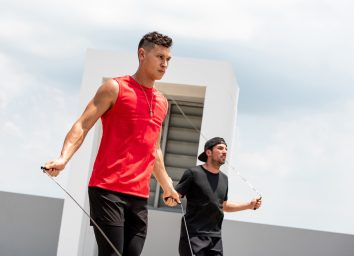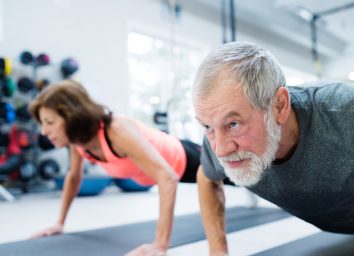One Important Lean-Body Exercise Tip from a Trainer Over 60
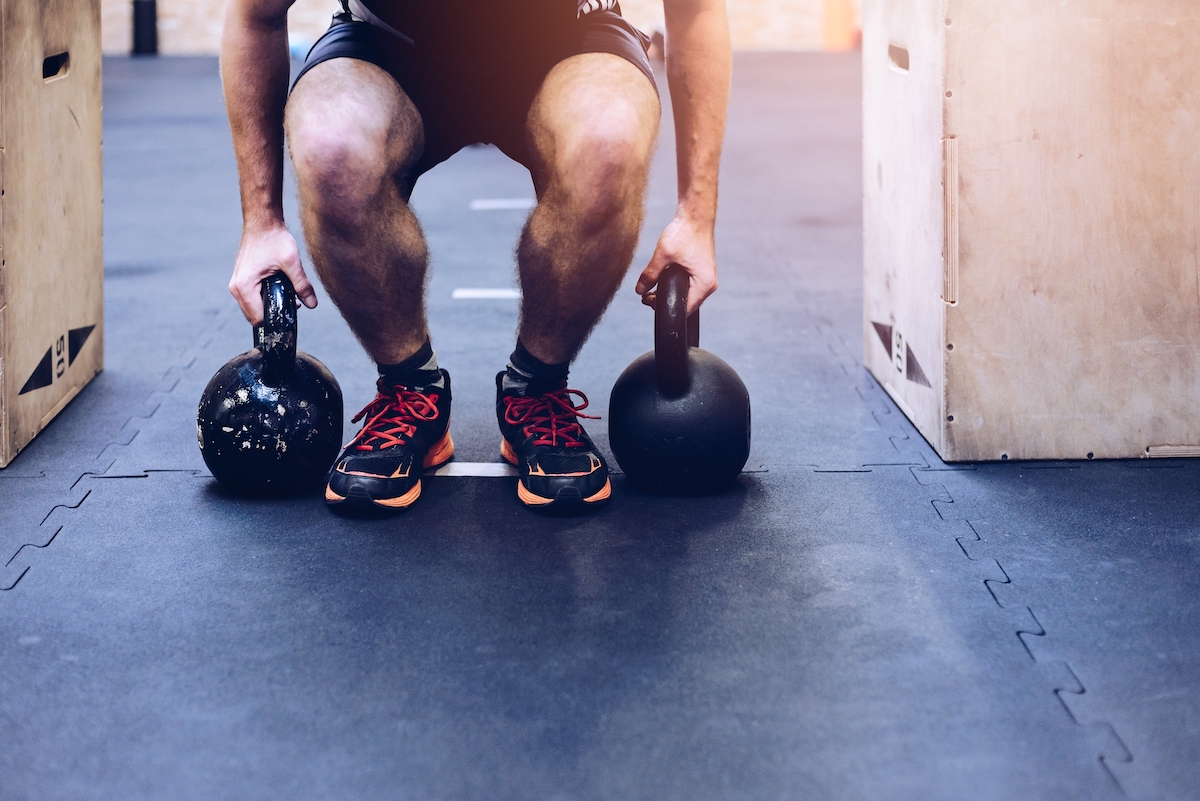
If you're a loyal reader of ETNT Mind+Body, you're no doubt familiar with the term "sarcopenia." Primarily associated with older people, it refers to the inexorable loss of muscle mass, muscle function, and strength as we age.
"Risk factors for sarcopenia include age, gender and level of physical activity," says one study published in Clinical Cases in Mineral and Bone Metabolism. "There is an important correlation between inactivity and losses of muscle mass and strength…. Physical activity should be a protective factor for the prevention but also the management of sarcopenia."
When you lose muscle mass and strength, it's an ugly marker of decline. "It can result in poor balance, difficulty walking, and finding daily activities become more difficult to perform," write the health experts at Top Doctors in the UK. "Sarcopenia can lead to disability and lack of independence, as well as increasing the risk of falls, fractures or injuries. In addition to a loss of muscle mass, there is an increase in fat tissue which increases the risk of hypertension, obesity or diabetes."
The single best way to offset this loss of muscle mass—and to burn fat and ultimately gain stronger muscles and get a leaner body—is to engage in strength training. "Strength training can reverse sarcopenia and keep one's muscles and bones strong," Valerie Hurst, 61, an FAI-Certified Trainer and Certified Brain Health Trainer at Kemper Wellness, told us. "Many individuals over the age of 60 forget about lifting weights or think that they can't build muscle as they age, but that's just not true. By adding weight or strength training at least two days per week to your exercise routine, you can avoid loss of muscle and thus stay independent longer by maintaining your strength and balance."
But that's not all. To ensure that you're getting the most out of your strength-training routines, read on, because we've included another tip from Hurst right here. So read on, and for more great exercise advice, don't miss the Secret Side Effects of Lifting Weights for the First Time, Says Science.
Lift Heavier Weights
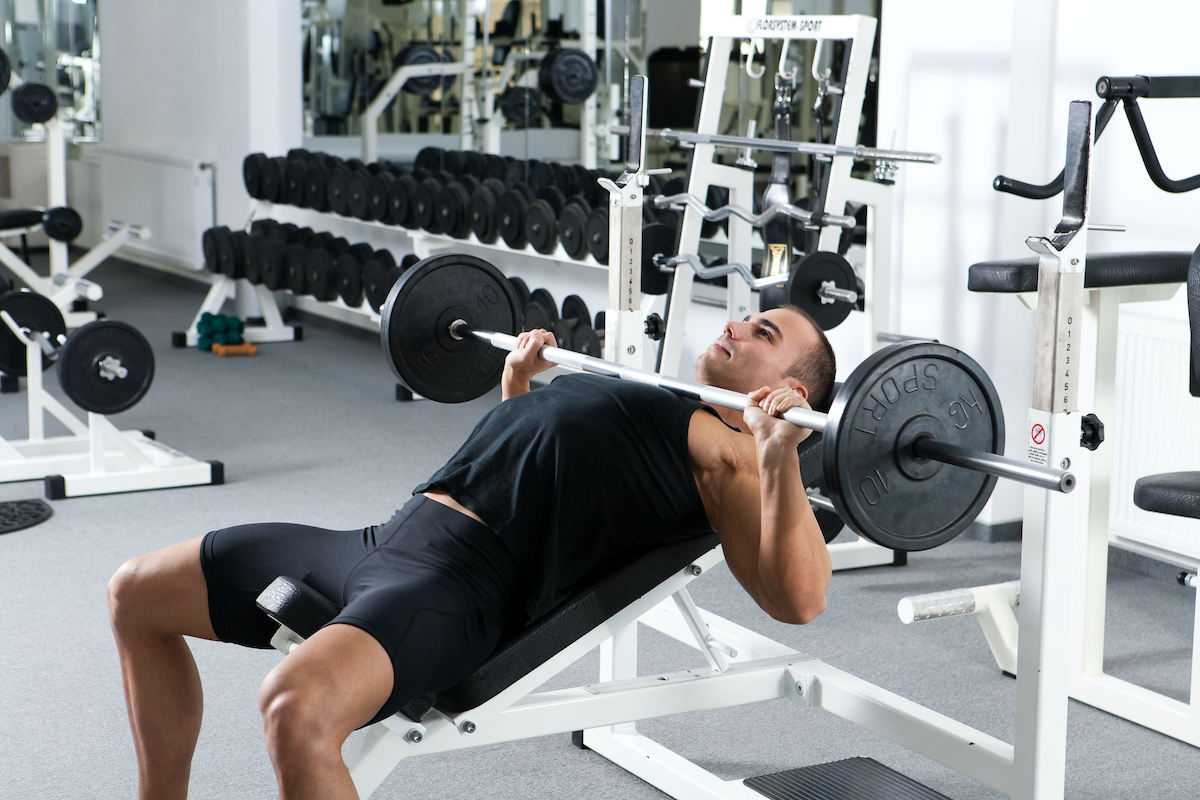
It may come as a surprise to people who don't lift weights, but lifting different sized weights can actually produce difference results. And, believe it or not, there's a difference between trying to achieve bigger muscles versus stronger muscles. While there are undeniable benefits to lifting smaller weights, you should go heavier if you want to build strength.
"By adding in heavier weights you will see better results," says Hurst. "Lifting heavier will give you even more muscle definition and increase your strength. When you can easily accomplish 8-12 reps by your third set, it's time to move up in weight. You want to challenge your muscles. Start pushups on the wall, move to doing them on your knees on the floor, then move to doing pushups on your toes. Start with just a couple reps and challenge yourself to do one more each day." And for more great exercises you can do, see these 5-Minute Exercises for a Flatter Stomach Fast.
Science Has Her Back
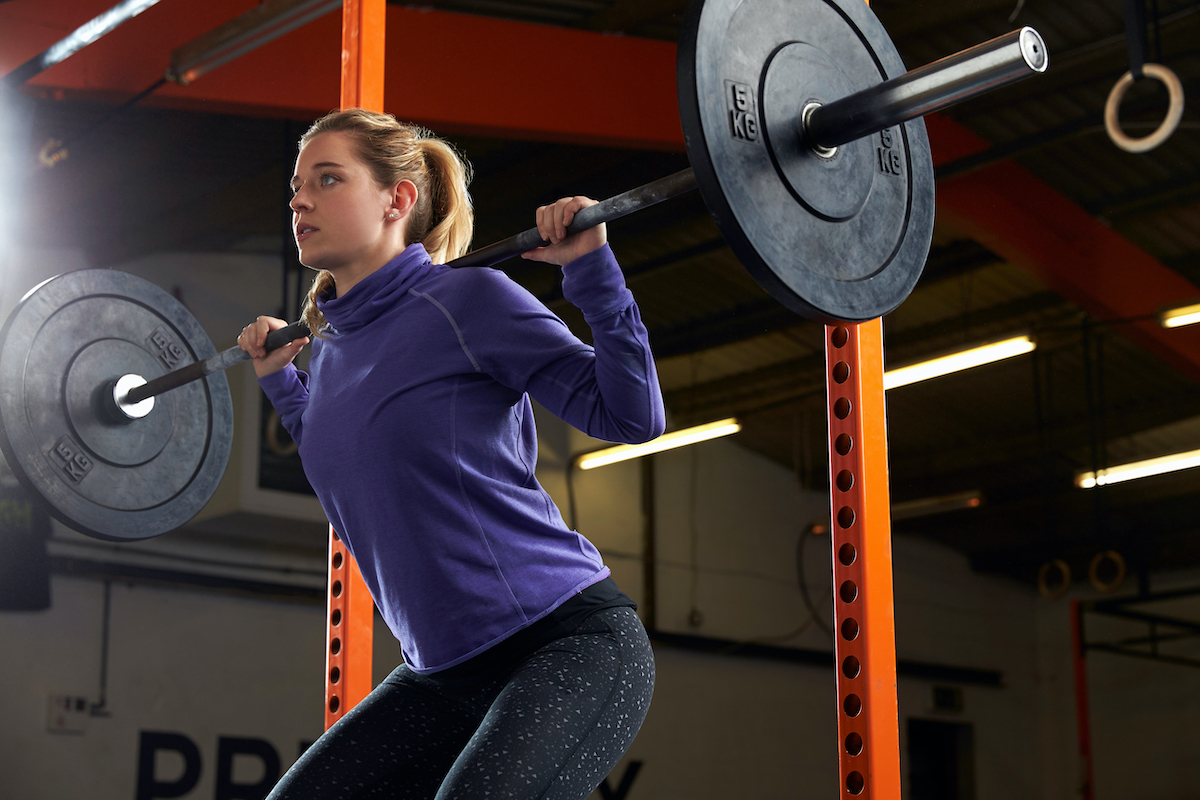
New research published in the journal Medicine & Science in Sports & Exercise looked closely at more than 25 studies on the subject of weightlifting, which included information on more than 700 healthy adults and the amounts of weights that they lifted. The researchers ultimately found that while different types of weights all were capable of increasing the size of your muscles (for the record, that process is called "hypertrophy"), only people who lifted higher or moderate loads significantly improved their strength.
"That means lighter loads may 'grow' your muscles, but it's the heavier weights that will make them much stronger, according to lead researcher Pedro Lopez, M.Sc., Ph.D.(c), at the Exercise Medicine Research Institute at Edith Cowan University in Australia," observes Runner's World.
Wait—So Bigger Muscles Aren't Stronger Muscles?
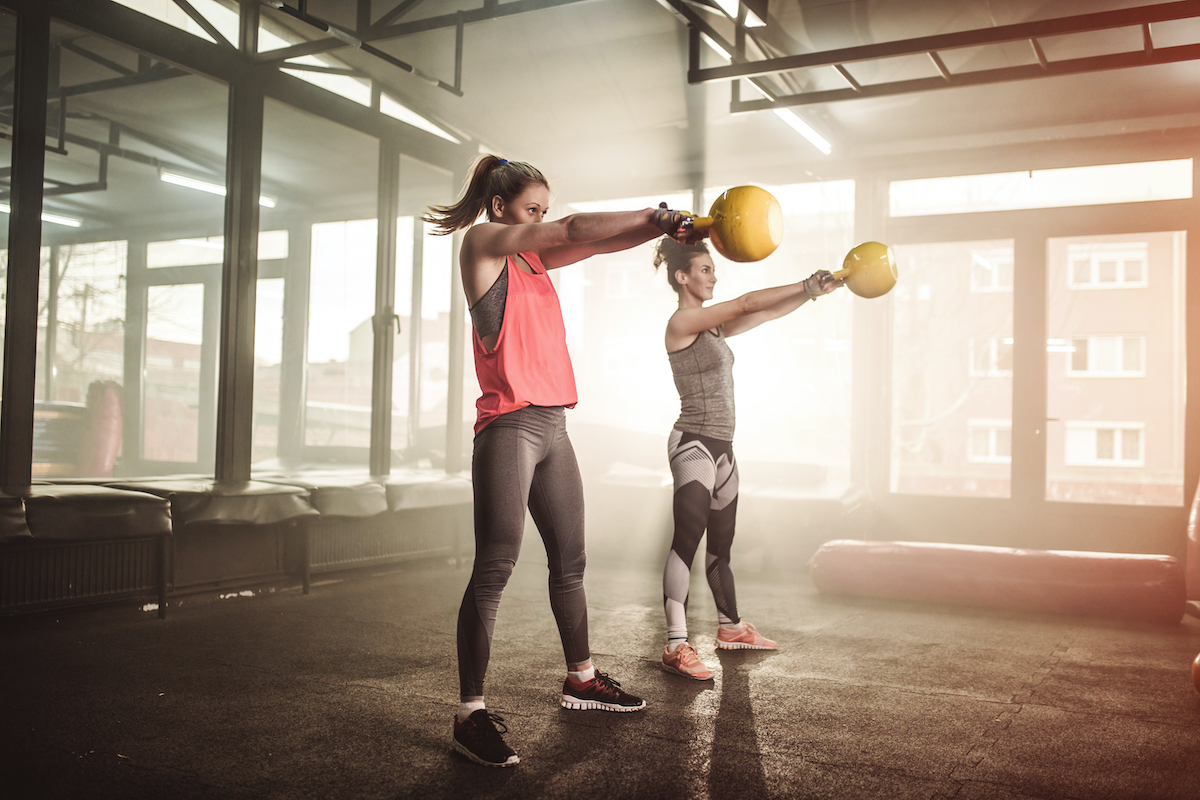
That's right. (Crazy, huh?!) And it's something that celebrity trainers and Hollywood actors who get beefed up for roles have known for a long time. As Superman actor Henry Cavill revealed to Celebwell, he doesn't lift huge weights to get his enormous arms—he actually lifts smaller weights to pump as much blood to his muscles as possible to grow their size. "You're doing micro tears and you're creating size in the muscle and not necessarily huge amounts of strength," he explained.
Scientists have discovered that the muscle cells in major bodybuilders—those with the biggest muscles of all—aren't even the strongest of all of the athletes out there. "We tend to equate big muscles with being strong and powerful. But new research has found that—at a cellular level—the large, defined muscles seen on bodybuilders don't fare well against those of power athletes (such as weight lifters or sprinters, whose sport requires high forces produced quickly) or even men who don't train at all," write Lee Hamilton and Angus Hunter, two experts in exercise science at the University of Stirling, in the UK.
So What Should You Do?
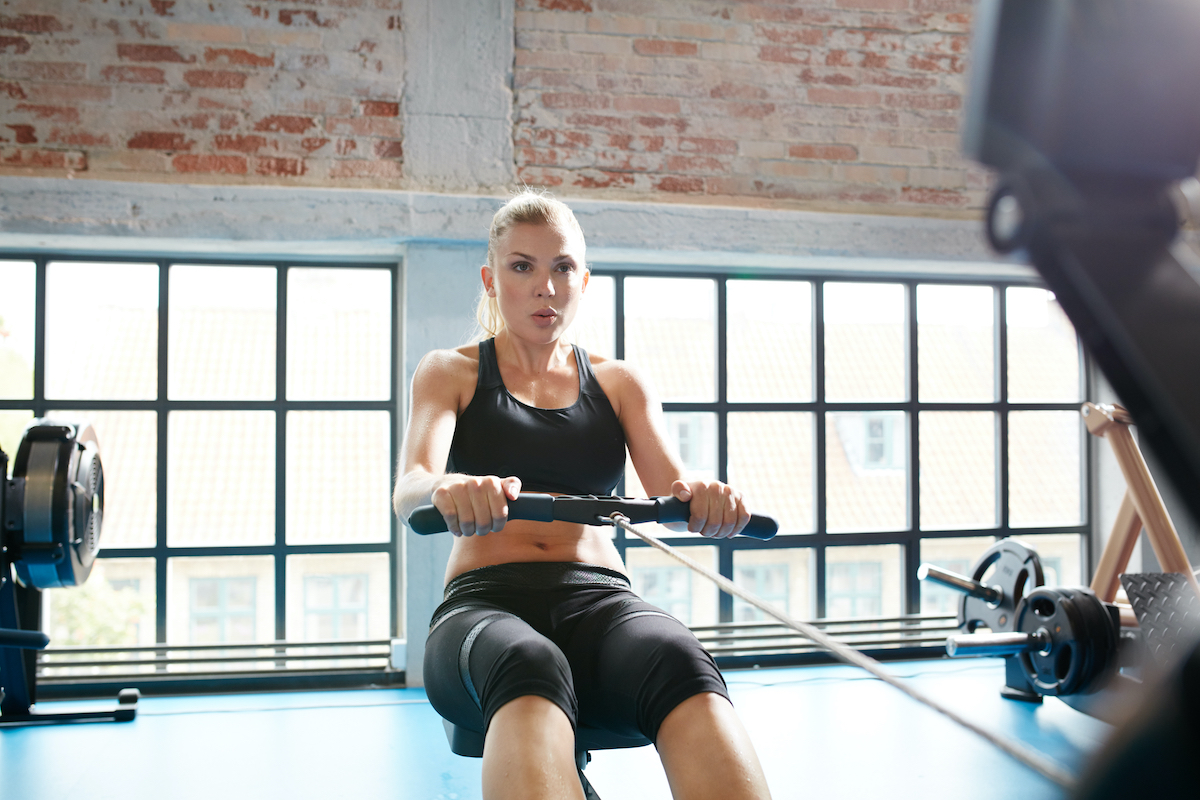
Unless you're training for a bodybuilding competition—or starring as Superman—you'd be better served with stronger muscles as you age—and that means lifting heavier weights. How heavy? As Hurst mentioned, the leading trainers agree that the weight should be heavy enough that you can perform 8-12 reps in a single set and no more. If you can do more than 12, your weight is too light. She also advises you to also mix it up. "Try bands and balls, and bodyweight moves with TRX straps," she says. "Not only does this keep your routine fresh, but it challenges and strengthens different muscles." Also, try The #1 Best Workout for Stronger Muscles After 60, According to a Top Trainer.

